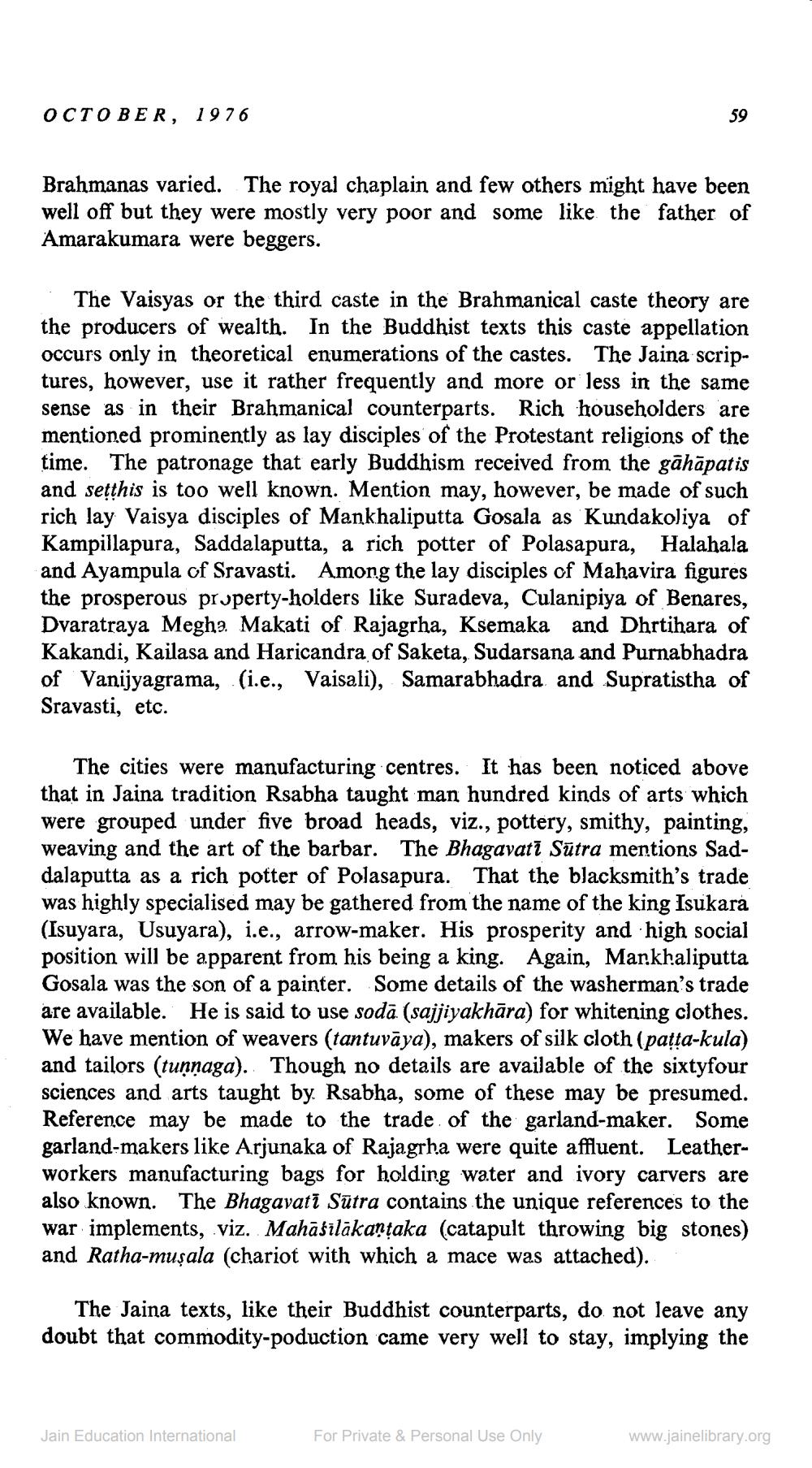________________
OCTOBER, 1976
Brahmanas varied. The royal chaplain and few others might have been well off but they were mostly very poor and some like the father of Amarakumara were beggers.
59
The Vaisyas or the third caste in the Brahmanical caste theory are the producers of wealth. In the Buddhist texts this caste appellation occurs only in theoretical enumerations of the castes. The Jaina scriptures, however, use it rather frequently and more or less in the same sense as in their Brahmanical counterparts. Rich householders are mentioned prominently as lay disciples of the Protestant religions of the time. The patronage that early Buddhism received from the gāhāpatis and seṭṭhis is too well known. Mention may, however, be made of such rich lay Vaisya disciples of Mankhaliputta Gosala as Kundakoliya of Kampillapura, Saddalaputta, a rich potter of Polasapura, Halahala and Ayampula of Sravasti. Among the lay disciples of Mahavira figures the prosperous property-holders like Suradeva, Culanipiya of Benares, Dvaratraya Megha Makati of Rajagrha, Ksemaka and Dhrtihara of Kakandi, Kailasa and Haricandra of Saketa, Sudarsana and Purnabhadra of Vanijyagrama, (i.e., Vaisali), Samarabhadra and Supratistha of Sravasti, etc.
The cities were manufacturing centres. It has been noticed above that in Jaina tradition Rsabha taught man hundred kinds of arts which were grouped under five broad heads, viz., pottery, smithy, painting, weaving and the art of the barbar. The Bhagavati Sūtra mentions Saddalaputta as a rich potter of Polasapura. That the blacksmith's trade was highly specialised may be gathered from the name of the king Isukara (Isuyara, Usuyara), i.e., arrow-maker. His prosperity and high social position will be apparent from his being a king. Again, Mankhaliputta Gosala was the son of a painter. Some details of the washerman's trade are available. He is said to use sodā (sajjiyakhāra) for whitening clothes. We have mention of weavers (tantuvāya), makers of silk cloth (paṭṭa-kula) and tailors (tunṇaga). Though no details are available of the sixtyfour sciences and arts taught by Rsabha, some of these may be presumed. Reference may be made to the trade of the garland-maker. Some garland-makers like Arjunaka of Rajagrha were quite affluent. Leatherworkers manufacturing bags for holding water and ivory carvers are also known. The Bhagavati Sūtra contains the unique references to the war implements, viz. Mahāśīlākaṇṭaka (catapult throwing big stones) and Ratha-muşala (chariot with which a mace was attached).
The Jaina texts, like their Buddhist counterparts, do not leave any doubt that commodity-poduction came very well to stay, implying the
Jain Education International
For Private & Personal Use Only
www.jainelibrary.org




